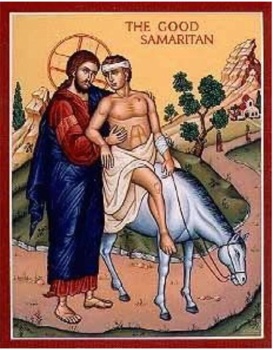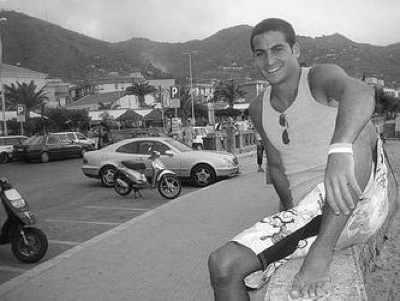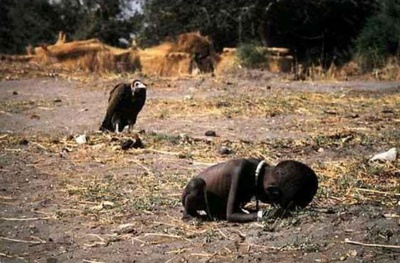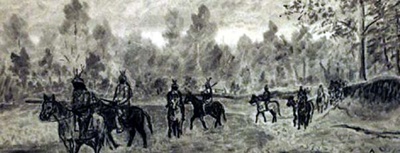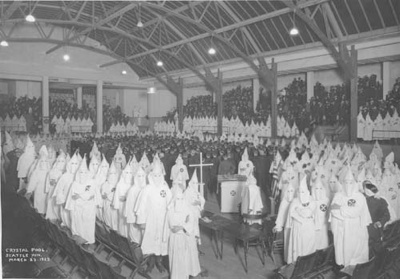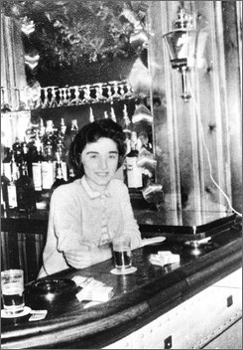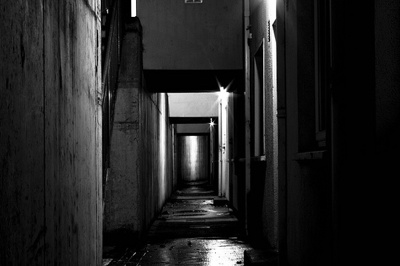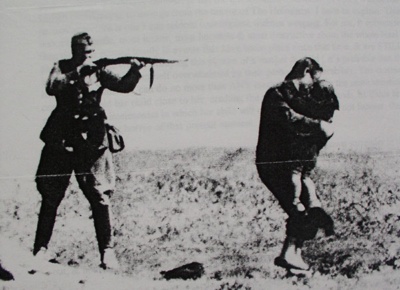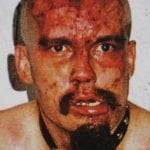 History
History  History
History  Pop Culture
Pop Culture 10 Cases of Grabbing Defeat from the Jaws of Victory
 History
History 10 Common Misconceptions About the Renaissance
 Weird Stuff
Weird Stuff 10 Crazy Things Resulting from Hidden Contract Provisions
 Facts
Facts 10 Unusual Facts About Calories
 Weird Stuff
Weird Stuff 10 Days of Humiliation When the Person Should Have Stayed in Bed
 Humans
Humans 10 Surprising Ways Game Theory Rules Your Daily Life
 Food
Food 10 Popular (and Weird) Ancient Foods
 Animals
Animals Ten Bizarre Creatures from Beneath the Waves
 Technology
Technology 10 Unexpected Things Scientists Made Using DNA
 History
History 10 Events That Unexpectedly Changed American Life
 Pop Culture
Pop Culture 10 Cases of Grabbing Defeat from the Jaws of Victory
 History
History 10 Common Misconceptions About the Renaissance
Who's Behind Listverse?

Jamie Frater
Head Editor
Jamie founded Listverse due to an insatiable desire to share fascinating, obscure, and bizarre facts. He has been a guest speaker on numerous national radio and television stations and is a five time published author.
More About Us Weird Stuff
Weird Stuff 10 Crazy Things Resulting from Hidden Contract Provisions
 Facts
Facts 10 Unusual Facts About Calories
 Weird Stuff
Weird Stuff 10 Days of Humiliation When the Person Should Have Stayed in Bed
 Humans
Humans 10 Surprising Ways Game Theory Rules Your Daily Life
 Food
Food 10 Popular (and Weird) Ancient Foods
 Animals
Animals Ten Bizarre Creatures from Beneath the Waves
 Technology
Technology 10 Unexpected Things Scientists Made Using DNA
10 Notorious Cases of the Bystander Effect
The bystander effect is the somewhat controversial name given to a social psychological phenomenon where individuals do not offer help in an emergency when other people are present. The probability of help has in the past been thought to be inversely proportional to the number of bystanders. In other words, the greater the number of bystanders, the less likely it is that any one of them will help. This list describes the prototype of the effect and cites nine particularly heinous examples.
First, the prototype of the bystander effect. Jesus tells a story to a lawyer, who, in all other ways, is blameless and upright in God’s eyes. He obeys the Ten Commandments and loves his neighbor as himself. But he asks Jesus, “Who is my neighbor?”
With the following parable, Jesus then explains that everyone is everyone’s neighbor and that help should be offered to anyone in need of it, regardless of who or what that person is.
A Jew is going along the road and is beset by bandits, who beat him severely, strip his clothes, and rob him. They leave him for dead. Later, a priest walks by. He sees the Jew, moves to the other side of the road, and walks by without helping. Later, a Levite goes by, sees him, and gives him a wide berth, going on without helping.
Later, a Samaritan (considered by the Jews to be outcasts) comes by, sees him, and immediately helps him, taking him to a nearby inn, caring for him, and paying the innkeeper.
“Which of these is the neighbor of the Jew who is beaten by robbers?” Jesus asked.
“The merciful one,” replied the lawyer.
“Go and do likewise.”
In the following nine examples, no one goes and does likewise.

From the 10th to the 11th of January, 1992, 12-year-old Shanda Sharer was abducted and tortured by four teenage girls: Laurie Tackett, Melinda Loveless, Hope Rippey, and Toni Lawrence. Tackett was more or less the leader of the four and drew the others in the Goth lifestyle, punk rock, vampirism, witchcraft, Satanism, lesbianism, and such. She devised the plan for abducting Sharer and stabbing her to death out of revenge for stealing Loveless’s girlfriend.
They abducted Sharer from her house just after midnight, pretending to take her to see their mutual friend, Amanda Heavrin, the girlfriend Loveless believed Sharer to have stolen. As soon as she was in the car, Loveless put a knife to her throat and interrogated her about Heavrin, until they arrived at “the Witch’s Castle,” a local run-down house where teenagers liked to hang out.
They took her inside, tied her up, and discussed how they would kill her, at which point Sharer started crying. They claimed to have been frightened by passing headlights, so they took her to a nearby landfill in thick woods, where Loveless beat her savagely with her fists. Lawrence and Rippey claied to have wanted out of the situation by this point but did not dare try to run and call the police.
Loveless then tried to cut Sharer’s throat, but the knife was too dull. Rippey then got out, had Loveless and Tackett hold her down, and strangled her with a rope. They thought she was dead and threw her in the trunk, then went to Tackett’s home to wash up. They heard Sharer screaming, and Tackett went out with a kitchen knife and returned covered in blood. The screaming had stopped.
She then took out her runes, part of the Wicca lifestyle, and told the girls’ futures. Tackett and Loveless then went joyriding at 2:30 AM, while Lawrence and Rippey stayed at her home. Sharer began struggling to get out of the trunk, so Tackett stopped and beat her unconscious with a tire iron.
They returned a little before dawn, washed up again. Tackett laughed as she told what she had done. They left and went to a neighborhood burning area, where leaves and tree limbs were disposed of, and showed Sharer, nearly dead in the trunk, to the others. Lawrence claimed to have been so disgusted that she turned away. But she still refused to rat out her friends. Tackett sprayed Sharer with Windex, probably to exacerbate her wounds, and taunted her, “You’re not looking so hot, now, are you?”
They then filled a 2-liter Pepsi bottle with gasoline at a nearby station, drove to a secluded field, laid Sharer, alive, in a blanket in the grass, doused, and set her afire. Loveless returned a moment later and poured the rest of the gasoline on her, just to be sure.
Lawrence was scared to death by this point and finally called a friend and told her what had happened. She refused to call the police, now out of fear as an accomplice. Loveless became hysterical, sorry about what she had done, and called Amanda Heavrin to tell her. Heavrin did not believe them until she and another friend saw the trunk of Tackett’s car with blood and Sharer’s socks.
None of them called the police. Sharer’s body was discovered by two hunters earlier that morning, the 11th, who reported it. By 8:00 PM that night, the whole community knew, and Loveless finally confessed in a fit of hysteria to the police. Tackett, Loveless, and Rippey were sentenced to 60 years in prison, Lawrence 20 years. Lawrence was released on good behavior in 2000, Rippey in 2006. Unbelievably, Tackett was released on parole in 2018, and Loveless was released on parole in 2019.
Ilan Halimi was a French Jew kidnapped in Paris by Moroccan “barbarians,” as they like to be called, on January 21, 2006, and tortured for 24 days, finally dying on February 13. During this time, his kidnappers, at least 20 of them, beat him all over his body, especially his testicles, completely wrapped his head in duct tape, except for his mouth, so he could breathe and eat, stabbed him, burned his body and face with lighters and cigarettes, and broke his fingers to extract a ransom of 450,000 Euros from his family. They stripped him, scratched him, cut him with knives, and finally poured gasoline on him and set him afire.
During these three weeks, neighbors in the apartment block where his kidnappers had taken him (and where they lived) heard the commotion and came to watch. No one ever called the police. Twenty-seven people have so far been charged with joining in. Nineteen people have been convicted and given long prison sentences. One of the torturer’s fathers knew what was happening and did nothing to stop them. This man, Alcino Ribeiro, was sentenced to 8 months, but his sentence was suspended. He has served no time.
Those neighbors known only to have watched were not convicted, most not even indicted. Halimi was found handcuffed and bound with nylon rope, naked, to a tree about 40 yards inside a woodlot from a railway outside Paris on February 13. More than 80% of his body had been burned with acid, as well as gasoline, to the point that he was difficult to recognize. He had severe contusions, blood blisters, and hematomas covering most of his body, to the point that he was more blue than flesh-colored, multiple broken bones, one ear and one big toe missing, and his testicles looked like “blackened oranges.” Halimi died en route to a hospital.
The gang’s 25-year-old ringleader, Youssouf Fofana, was captured on the run in Abidjan 10 days after he had stabbed Halim. In 2009, Fofana was convicted of murder, acts of torture and barbarity, with anti-Semitism an aggravating circumstance. He is serving life in prison with no possibility for parole for 22 years. (He has since been sentenced to several additional years for new crimes including attacking prison personnel and posting videos to YouTube spewing anti-Semitic hate and praising al Qaeda from his cell.)
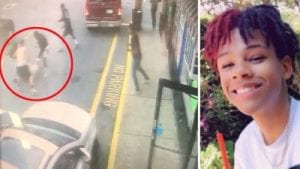
On September 17, 2019, the life of a 16-year-old high schooler in Long Island ended tragically in a violent brawl outside a strip mall. Khaseen Morris was told to show up outside the mall at a specific time by several other teens after he was seen walking home the girlfriend of another boy. Morris showed up and was immediately attacked by a group of five teenagers. A senseless brawl erupted, and Morris was stabbed repeatedly in the chest, dying later that night in the hospital.
The horrific nature of Morris’s murder is amplified by the fact that the brawl occurred in broad daylight and was filmed by a group of 50 teenagers so that Morris’s stabbing was caught on dozens of phone cameras. No one intervened to assist the 16-year-old, even though he was outnumbered by a group of boys larger and older than him. Thus, Morris’s murder occurred in a stunning, shocking absence of humanity. In his last desperate moments of utter helplessness, no one came to his side. Eventually, Tyler Flach, 18, and seven other teens would be arrested and charged with Morris’s murder. His trial is currently underway, while the other seven face pending trials at a later date.
With social media becoming a keystone to many of our lifestyles, the bystander effect has evolved with it. While our access to social media also allows us to research injustices and take action against it, the bystander effect can still virtually work against us. The variables that contribute to the bystander effect are amplified via the internet because we cannot see how others are physically reacting. A prime example of this occurred in 2017 when the sexual assault of a 15-year-old girl by five men was broadcasted on Facebook Live with over 40 viewers, yet no one called the police. Another Facebook Live video broadcasting the torture of a man with a mental disability in 2017 received plenty of disapproving comments on the video, yet no police calls. The video of the man being tortured was up for over 30 minutes before being taken down.
Countless other instances like this happen every day, and most of the time, as “digital bystanders,” we do nothing. While the Chicago sexual assault case was widely spoken out against, many videos epitomizing the bystander effect have been swept under the rug or, worse, gone viral. Some sites are known for accepting and publishing submissions of bystander-filmed clips of street violence and have capitalized on our unlikelihood to take action for those in need. They have thus created a market in which real-life violence is celebrated and shared.
Kevin Carter was a South African Photojournalist who, in March 1993, took the most infamous photograph, so far, of the brutality and disregard for human suffering in sub-Saharan Africa. The photo shows a female Sudanese toddler, alone and severely emaciated, attempting to crawl to an aid station for food. A vulture is standing on the ground behind her, waiting for her to die so it can eat her.
Carter claimed that he waited 20 minutes for the vulture to spread its wings, which he thought would make a better picture, and when it didn’t, he took the picture as is. For those 20 minutes, the toddler had to rest before resuming her trip. She whimpered and panted, and Carter did nothing to help her.
He took the picture, scared the vulture away, then left the girl to continue crawling on her own. Luckily, she eventually made her way to the relief center. Joao Silva, a journalist friend of Carter, denied this account, who stated that the child’s parents left for only a moment to take food from a plane. Either way, Carter claimed later that he just “didn’t want to get involved.” After winning the Pulitzer for this photograph, he killed himself the next year by carbon monoxide poisoning in his truck in Johannesburg.
This was not a single incident, but all the major crimes against the Indians were perpetrated for the same reason. European settlers and their descendants wanted more land. They thus drove the Indians westward, killing hundreds of thousands over the centuries to make way for themselves. Unfortunately, no land is ever enough land. They wanted more, and the Indians continued being deprived of life, liberty, and the pursuit of happiness.
The most astonishing aspect of this crime is that many notable Americans, especially Andrew Jackson, considered it righteous. The Indians did not have the military strength to defend themselves and thus deserved to lose their rights. Survival of the fittest, so to speak. Jackson is the man most directly responsible for the “Trail of Tears” relocation of the Cherokee. Later, the Navajo and Sioux, to name just two large tribes, were slaughtered in outright warfare.
From 1585 with the Lost Colony to the turn of the 20th Century, very few Europeans or their descendants ever raised much of a fuss, if any at all, over this disgustingly awesome mistreatment of an entire race of humans.
If you’ve seen the film “Mississippi Burning,” you’re familiar with the murders of James Chaney (black), Michael Schwerner, and Andrew Goodman (both white, Jewish). The White Knights of the KKK shot them dead and buried them in an earthen dam in 1964. The outrage in the northern half or so of the United States was immediate and fierce, as it should have been.
But there was no public outcry of any kind in the South. Very few black people, especially in Mississippi, had anything to say about the crime, as they didn’t dare incur the wrath of the white authorities. But the truly astonishing aspect is the absence of an outcry by many white people, if any, as they either agreed with the crime or just didn’t care about the plight of blacks (and Jews, and anyone other than “WASPs”) in the South.
Racial hatred had become so rampant and impudent that the Judges who presided over the various criminals of this sort of case rarely convicted them and then imposed the lightest sentences. The culprits of the three 1964 murders, 17 of them, were tried. Only 7 were convicted, not of murder, but of “civil rights violations,” because the prosecution didn’t believe they could be convicted, in Mississippi, of murder, which was probably true. The harshest sentences were 10 years each to two culprits. Others received 7 years or 3 years. No one served more than 6.
The most infamous example of the bystander effect took place on March 13, 1964, in Kew Gardens, Queens, NY, when Catherine Genovese entered her apartment building at about 3:15 AM after work. She was stabbed twice in the back by Winston Moseley, a heavy machine operator, who later explained that he simply “wanted to kill a woman.”
Genovese screamed, “Oh, my God! He stabbed me! Help me!” and collapsed. Several neighbors in surrounding buildings reported hearing her voice but decided it was probably just a drunken brawl or lovers’ spat. One man shouted from his window, “Let that girl alone!” which scared Moseley away.
This neighbor was sure to have seen Genovese crawling across the street, under a streetlight, to her apartment but did nothing to help her. Witnesses saw Moseley drive away, then return about 10 minutes later. He had put on a wider-rimmed hat to hide his face and searched for Genovese in the parking lot, the train station, and the apartment complex, for 10 minutes, before finding her prone in the external hallway at the rear of the building, where the door was locked. She could not get in.
Moseley proceeded to stab her to death, inflicting multiple wounds to her hands and forearms, indicating that she tried to fight him off. She finally succumbed, and he raped her as she lay dying. He then stole around $50 from her and fled. The whole incident spanned 30 minutes.
A newspaper blasted it the next day as “Thirty-eight Who Saw Murder Didn’t Call Police,” but this is inaccurate. There were approximately 12 people who claimed to have seen the first attack. Many of them later stated that they “just didn’t want to get involved.” A simple phone call to the police would have sufficed, but everyone assumed someone else would do it.
The events that transpired on the night of October 24, 2009, inspired me to compile this list, and I admit that it has caused me to reconsider the crime of the #1 entry.
The girl’s name has not been released to date, as she is 15 years old, but the accounts of the crime all agree, and it is beyond belief. For 2 and a half hours, while the high school’s Homecoming Dance took place inside the gymnasium, approximately 10 men gang-raped the 15-year-old student, beating her savagely the whole time. All the while, 10 others stood around laughing and taking pictures with their cell phones.
The crowd eventually numbered more than 20, and no one called the police. No one went inside to tell a security guard or a policeman, several of which were on campus at the time. A little earlier, the assistant principal looked out his office window and saw 12 to 15 grown men sitting around near the scene of the crime, none of whom had identification badges, as is required. None of whom appeared to be teenagers, and the assistant principal did not call the police or alert any teachers or students. He returned to his job and ignored them.
A local resident heard of the attack from her boyfriend and immediately contacted the police. The victim was found unconscious under a picnic table and was air-lifted to a hospital in critical condition. She was released from the hospital on October 28th.
A bystander described the assault: “They were kicking her in her head and they were beating her up, robbing her and ripping her clothes off; it’s something you can’t get out your mind. I saw people, like, dehumanizing her; I saw some pretty crazy stuff. She was pretty quiet; I thought she was like dead for a minute but then I saw her moving around. I feel like I could have done something but I don’t feel like I have any responsibility for anything that happened.”
Witnesses are believed to have recorded video footage of the attack using their phones, but local police were unable to obtain the recordings. However, arrests were made. Six men were imprisoned for the attack. Four pleaded guilty: Manuel Ortega was sentenced to 32 years in prison; Ari Morales was sentenced to 27 years in prison; Elvis Torrentes and John Crane were sentenced to six and three years in prison, after pleading guilty to lesser charges. Jose Montano and Marcelles Peter went to trial in 2013 and were convicted of forcible rape acting in concert, a forcible act of sexual penetration while acting in concert, and forcible oral copulation in concert. Montano and Peter were respectively sentenced to 33 years to life and 29 years to life, and their convictions and sentences were upheld in 2019.
The most repugnant, globally violent disgrace of the reputation of humanity gave rise to the equally infamous use of the phrase “diffusion of responsibility,” as the Nazi officers tried at Nuremberg all claimed the same defense, “We were just following orders.”
They argued that if the Holocaust really was as bad as journalists were saying, then someone else must surely have known of it. Thus it was not necessarily their responsibility to report it to the authorities.
They also argued that the only authorities in Continental Europe at the time were German. Thus, they would only have killed themselves by attempting to inform the outside world and would have accomplished nothing. This is not true. Most of the German population knew nothing of it but had they, they could easily have banded together and demanded that the Holocaust be stopped. The Nazis would have been reluctant to exterminate their own “master race,” and the Allies would have heard news of it by that point. So. the Nazis wisely concealed the concentration and death camps from all but the small villages nearest to them.
However, the Holocaust achieves #1 because the populations of the villages near these camps, Dachau, Buchenwald, Bergen-Belsen, Sachsenhausen, Mauthausen, and Ravensbruck, to name a few, knew perfectly well of the atrocities and horror inside the camps. The camps were established near fairly large towns and cities, the inhabitants of which could not have ignored the stench coming from them. Allied soldiers all reported smelling camps before finding them, from as far as 20 miles if the wind blew right.
The Allies accused the German citizens of these towns of knowing full well what was happening to Jews and other “undesirables” and yet making no effort to save one life. These German populations were thus forced to clean up the emaciated corpses and bury them in mass graves as punishment for their passivity.
